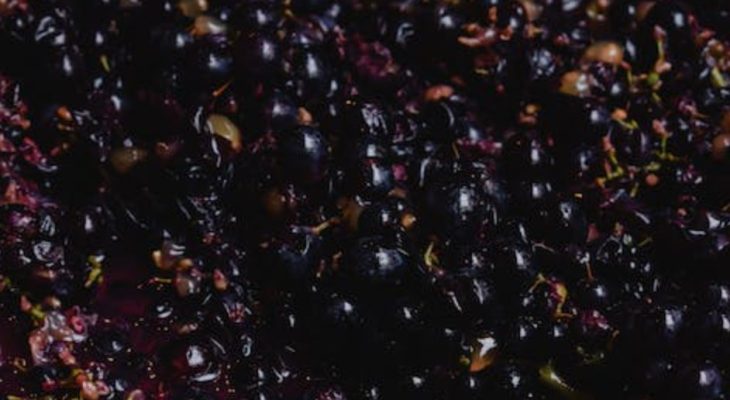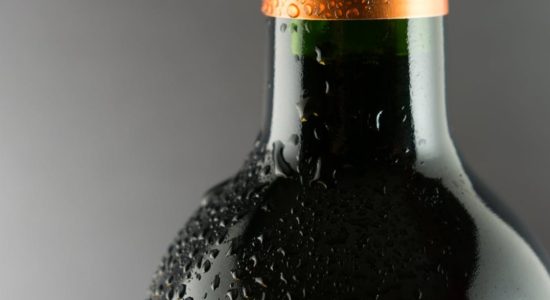What to Do When Homemade Wine Won’t Clear

Brewing homemade wine allows you to create an aromatic and flavorful wine based on your preferences. However, not all winemakers experience success on their first try. When making wine, there are multiple possible defects, and one common issue is cloudiness.
When homemade wine won’t clear, offset the protein and polyphenol balance with bentonite. Use Sparkolloid as a secondary measure, if desired. When the cloudiness is due to a pectin haze, use a pectin enzyme. Always use sanitized equipment and purified water. Never bottle from the primary fermenter.
In this article, I’ll walk you through several reasons why homemade wine won’t clear and what to do about it, and how to tell the difference between sediment and spoilage. Finally, I’ll touch on whether it’s safe to drink cloudy homemade wine. Read on to learn more.
Why Homemade Wine Appears Cloudy
Wine turbidity doesn’t necessarily mean that you’ve created a poor-quality product. Usually, the cloudiness is due to one of the following reasons — and most are relatively simple to remedy, as I’ll discuss later in this article.
Proteins and Polyphenols Cause Cloudy Wine
One of the primary reasons why homemade wine appears cloudy is because of the naturally-occurring polyphenols and proteins found in grapes and other fruits. In most cases, winemakers observe protein haze in white wines.
Protein haze does not affect the overall quality of wine; it’s merely a visual defect.
Commercial winemakers utilize specialized filtration systems to offset the balance of proteins and polyphenols, thus clarifying the wine. Most homemade winemakers, however, do not have this luxury.
Various finishing agents are available to achieve protein stability in homemade wines.
Unfinished Fermentation Leads to Wine Turbidity
During the fermentation process, wine always appears cloudy. This haziness is a normal part of the winemaking process, which is why winemakers rack wine and add fining agents. However, if you incorporate fining agents before the wine finishes fermenting, they won’t do much.
Some wines have a very slow fermentation process. It could take months before fermenting ends. Therefore, many winemakers make the mistake of pulling the wine too quickly. As such, the turbidity remains.
Always check the specific gravity of the wine before assuming the fermentation process is complete. Winemakers may need to rack slow-fermenting wines three times or more to clear it.
Wine Fermentation Can Restart
Even if the fermentation process has completed, you can inadvertently restart the process. Winemakers must take care to avoid temperature changes and excessive movement so as not to reactivate any yeast remaining in the carboy.
Also, when adding conditioning sugars, always use a stabilizer.
For more information on wine fermentation and what happens if wine ferments for too long, check out this YouTube video from HomeBrewAdvice:
Fruits Produce a Pectin Haze in Wine
If you notice excessive turbidity in your homemade fruity wine, it could be due to high amounts of pectin. Pectin is a naturally-occurring fiber found in fruits. This sweet, gel-like fiber is commonly used in jellies and jams.
During the wine fermentation process, pectin breaks down. However, some fruits have higher levels of this fiber, causing some pectin to remain. This leads to cloudiness.
Fruits that have a higher pectin level include:
- Apples
- Peaches
- Pears
- Plums
If you’re using one of the abovementioned fruits to make wine, you should have pectin enzymes on hand. Pectin enzymes break down any remaining pectin in wine.
You cannot use regular fining agents, such as bentonite to clear pectin haze.
Bottled Sediment Creates Turbid Wine
Fermenting wine requires racking, the process of moving the liquid from one container to another.
Winemakers should never bottle wine from the primary fermenting vessel. This barrel, tank, or other container holds all of the deposits from the fermentation process. By bottling wine out of this vessel, you’re bottling the sediment as well.
Always rack the wine at least once prior to bottling to separate the wine from the deposits — but don’t assume you’re safe from turbidity just yet.
Even if the wine appears clear to the naked eye, yeast may be suspended within the liquid. If you bottle the wine with this floating yeast, eventually, it’ll settle to the bottom, leading to unsightly sediment — and it can cause cloudiness when pouring.
As such, patience is key. You must let the wine rest before bottling.
Iron-Laden Water Promotes Wine Haziness
Tap water isn’t exactly the best water for winemaking. In fact, the chemicals in tap water can lead to a multitude of problems for winemakers, particularly iron and chlorine.
Iron, in particular, can interact with air causing oxidation. This oxidation causes white or blue particles (ferric casse) to appear in the wine. It’s common among wines with low acidity or those stored at cooler temperatures.
Bacterial Contamination Leads to Murky Wine
Commercial winemakers have rigid sanitation procedures and other protocols in place to avoid bacterial contamination and spoilage. Home winemakers, however, must take extra care to ensure that their wine stays free and clear of any unwanted microbial growth.
Excessive turbidity may be the result of bacterial contamination. Winemakers should always consider microbial contaminants if the wine doesn’t clear after multiple rackings and treatments.
You can test for bacterial contamination by sniffing and tasting — the first sign of bad bacteria in wine is a foul odor and unpleasant taste.
7 Ways to Clear Homemade Wine
To clear homemade wine, always start with sanitized equipment and purified water. After fermentation, offset the protein or polyphenol balance with bentonite and Sparkolloid (some people even utilize eggshells to clear wine). Only bottle the wine once you’ve achieved the desired clarity.
Let’s look at each of these steps more in-depth.
1. Sanitize Your Equipment
If you suspect bacterial contamination due to a foul aroma and taste, dump the wine, clean and sanitize the equipment (including all bottles), and start the process again.
When adding sulfites prior to and after fermentation, bacterial contamination is less likely. Therefore, if the drink tastes and smells normal, try another fermentation method before suspecting harmful microbial growth.
2. Use Purified Water
Many of the chemicals found in city and well water can adversely affect the quality of your homemade wine. Not only that, but the minerals in hard water may reduce the effectiveness of detergents when cleaning and sanitizing your equipment.
Chlorine may produce safe drinking water by killing dangerous microbes, but wineries no longer use chlorinated water in wine production. It contributes to TCA, a chemical compound shown to cause cork taint, leading to a musty odor in the finished product.
As I mentioned earlier in this article, a high iron content in tap or well water can cause particulate matter to form in wine.
The best way to avoid chemicals and hard water is by using purified water in the winemaking process.
3. Allow the Wine to Finish Fermenting
Sometimes, wine turbidity results from the continuation of fermentation. Therefore, if you observe cloudiness, move the wine back into the carboy to allow it to finish fermenting. Test the specific gravity over the course of three to four days until it reaches .990 or less.
I feel that it’s important to note that while most winemakers rely on racking, settling, stabilization, and various treatments to clear wine, fermentation at cool temperatures also promotes clarification. Additionally, it reduces the likelihood of microbial growth.
4. Do Not Bottle Wine From the Primary Fermenting Vessel
Wine will not clear after bottling. If you bottle cloudy wine in hopes that it’ll eventually clear, you’re only wasting your time. In the end, you’ll end up having to dump the bottles back into the carboy, reprocess the wine, and then bottle it all over again.
Only bottle wine once you’re certain that you’ve achieved the desired clarity.
To obtain a clear liquid, only bottle wine from a secondary (or third, fourth, etc.) vessel after fermentation, never from the primary fermenter containing sediment.
Additionally, do not bottle wine until you’ve given it time to rest. Wine may appear clear, even if yeast continues drifting through the liquid. Letting the wine rest ensures that the yeast drops to the bottom, allowing you to rack off the sediment prior to bottling.
5. Use Fining Agents
Below, we’ve included a table showcasing specific clarity issues and their recommended fining agent.
| Fining Agents for Specific Wine Clarity Issues | ||
| Problem | Cause | Recommended Fining Agent |
| Gelatinous Haze | Polysaccharides (i.e., pectin) | Enzymatic Agent |
| Off-White Flakes & Haze | Proteins | Bentonite + Sparkolloid |
| Blue/White Flakes & Haze | Ferric Casse | Bentonite + Sparkolloid |
Bentonite Clay
After the fermentation process completes, most home and commercial winemakers incorporate a dose of bentonite.
Bentonite is aged clay derived from volcanic ash. It’s commonly used as a general-purpose wine fining agent.
When used against protein instability, bentonite is extremely effective as it throws off the equilibrium between polyphenols and proteins. It can also reduce cloudiness caused by ferric casse.
The use of bentonite doesn’t affect the wine’s flavor or aromatic profile.
Sparkolloid
Home winemakers usually use bentonite and end the process there. However, you can clear the wine even more by using Sparkolloid. This fining agent comes in powder form and is usually mixed with boiling water prior to use.
Sparkolloid and bentonite essentially work together to create a clear wine. Bentonite collects deposits, dropping them to the bottom of the vessel. Since Sparkolloid has a positive charge, it reacts to those negatively charged deposits (i.e., yeast, tannins, etc.) and removes them.
Pectin Enzyme
Pectin enzymes break down these fruit fibers, resulting in a clear wine. However, you should first determine if pectin is, in fact, causing the haziness.
Here’s how to sample your wine and check for a pectin haze:
- Take a ½ quart sample of the wine.
- Add enough pectin for a 5 to 6-gallon sample.
- Observe the sample over time — it could take a couple of weeks.
If the wine sample clears with the addition of the enzyme, then you can rest assured that the haze is due to high pectin levels. In that case, dump the sample back into the carboy to allow the excess pectin enzyme to clear the wine.
If the wine sample doesn’t clear, then it’s most likely a particulate haze. In that case, you’ll need patience, gravity, and additional fining agents to resolve the issue.
Clarifying cloudy wine due to a pectin haze after fermentation ends is challenging. Adding more enzymes typically resolves the issue, but the lack of fermentation makes the enzyme take much longer to break down the pectin, usually up to two months.
Homemade Wine: Sediment or Spoilage?
Deposits in wine are relatively normal and provide no indication of a wine’s quality or lack thereof. Many sediments contain pectin (fruit fibers) and other naturally-occurring plant proteins found in grapes or other fruit.
With that said, most consumers are hesitant to purchase or drink cloudy wines — perhaps due to the possibility of bacterial spoilage. As such, manufacturers utilize several techniques to clarify the wine as much as possible.
To determine whether the cloudiness of your wine is due to sediments or spoilage, use these tips:
- Sniff the wine. Most of us enjoy the aromatic experience of wine prior to taking that first sip — but bacterial spoilage can create an odor that immediately turns you away from the glass. If you sense a sour or acetone smell, dump the wine.
- Taste the wine. If the wine smells normal, do a little taste test. You can take a small sip and swirl it around your mouth — but don’t swallow. If it tastes sharp like vinegar or has a burn similar to horseradish, then you know it’s spoiled.
If the wine smells fine but has sediment or cloudiness, try one of the methods mentioned in this article to clarify the liquid.
Can You Drink Cloudy Homemade Wine? (PAA)
You can drink cloudy homemade wine as long as bacterial contamination isn’t the cause of its turbidity. When wine spoils, it’s usually accompanied by a foul odor. In cases where sediment or cloudiness is from pectin, pulp, or other fibers, the wine is safe to drink.
Wine sediments are not hazardous and do not adversely affect the flavor. However, it may have a strange gritty or slimy mouthfeel that’s off-putting to some wine drinkers. In that case, you can use a decanter.
Decanters do not clarify the wine, but it separates the wine from the sediment, allowing you to avoid any weird textures when enjoying your homemade wine.
Final Thoughts
Home winemakers want to produce a drink of the utmost quality. They look for a nice mouthfeel, heady aroma, and palatable flavor — but clarity also plays a role in how people perceive wine.
Fortunately, you can achieve a pristine, clear wine with a brilliant luster — but first, you’ll need to understand why wine is cloudy in the first place. From there, you can determine how to fix the problem and create a wine you can be proud of.







